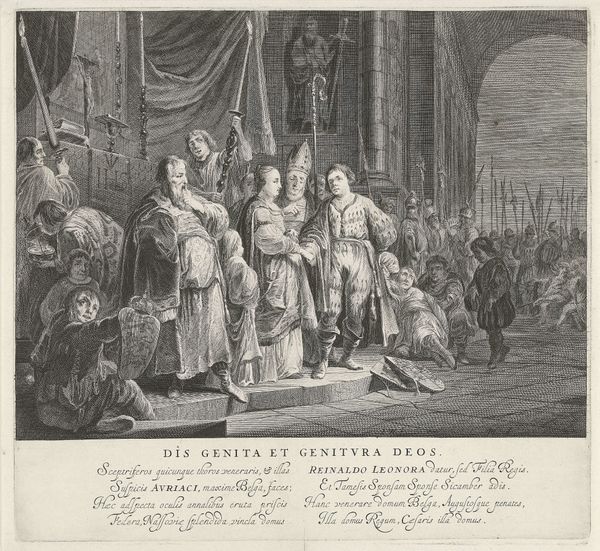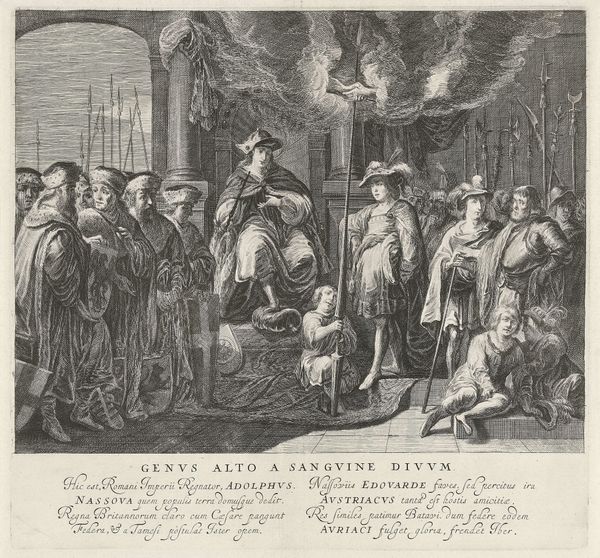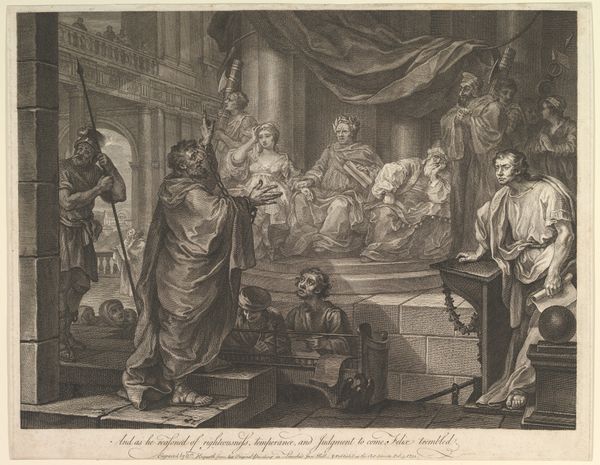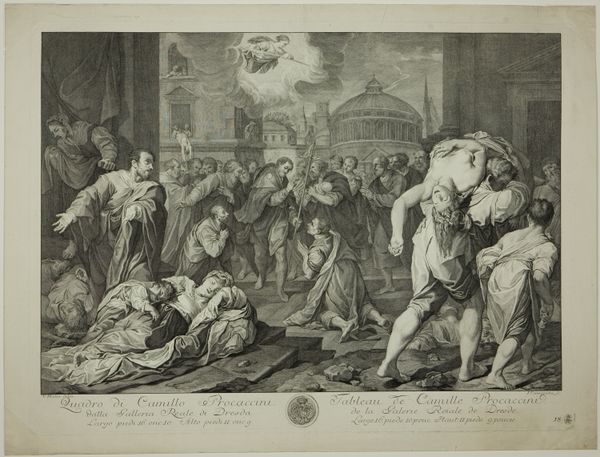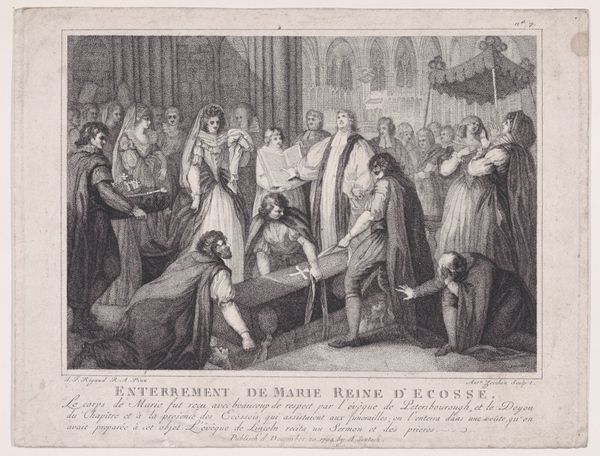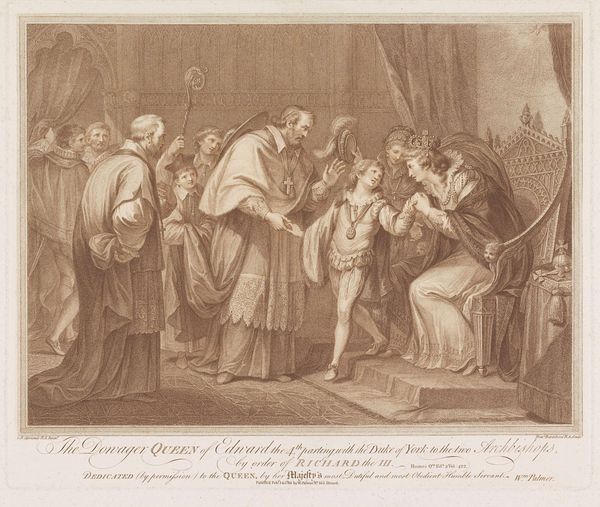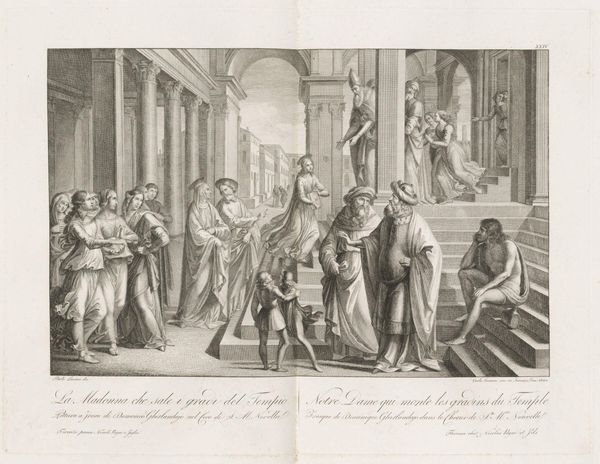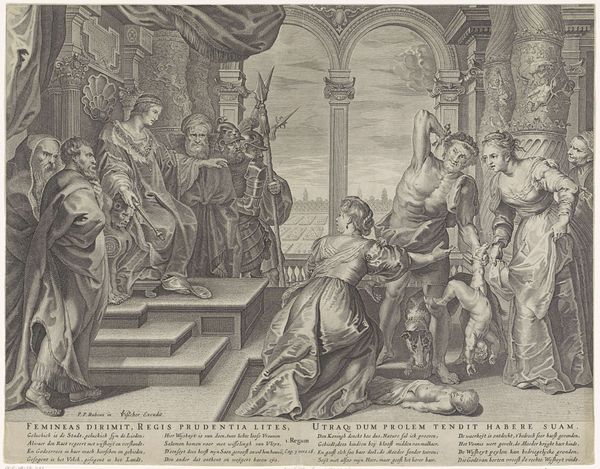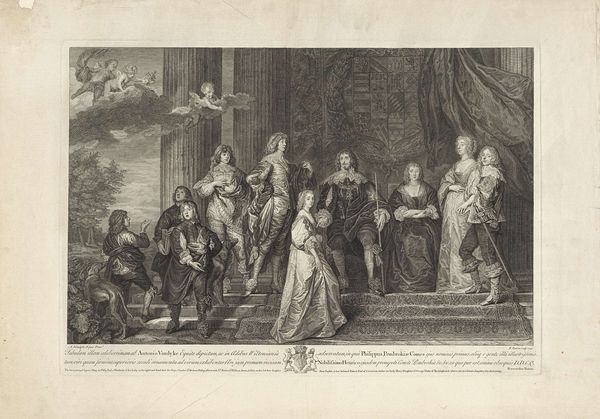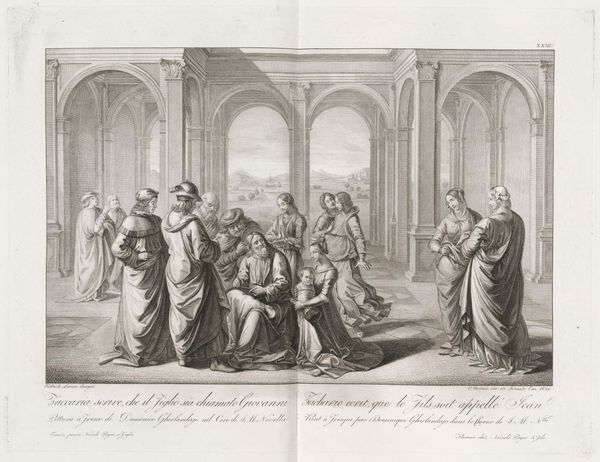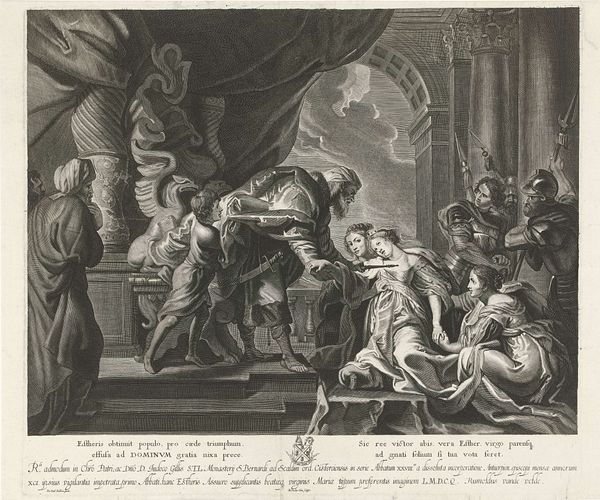
Tableau vivant met het huwelijk van Jacobus II van Schotland met Maria van Gelre-Egmond in 1449 1642
0:00
0:00
engraving
#
baroque
#
figuration
#
history-painting
#
academic-art
#
engraving
Dimensions: height 358 mm, width 386 mm
Copyright: Rijks Museum: Open Domain
Pieter Nolpe’s etching, created around the mid-17th century, presents a tableau vivant of the marriage of James II of Scotland to Mary of Guelders in 1449. It’s a fascinating lens through which to examine the construction of historical narratives and the role of women in dynastic power. Consider that Nolpe, a Dutch artist, is looking back at a Scottish Royal marriage that occurred two centuries prior to the artwork's creation. It wasn't uncommon for Dutch artists to produce such works during this era. Often these artworks were political tools used to cement the power and legitimacy of the ruling families. Mary of Guelders becomes a symbolic figure, embodying the hopes and aspirations of a nation through marriage. Yet, her individual agency is subsumed by her role as a vessel for political alliance. How does an artwork like this reflect the limited roles afforded to women in the shaping of history, where their worth was often measured by their ability to secure alliances through marriage?
Comments
No comments
Be the first to comment and join the conversation on the ultimate creative platform.
